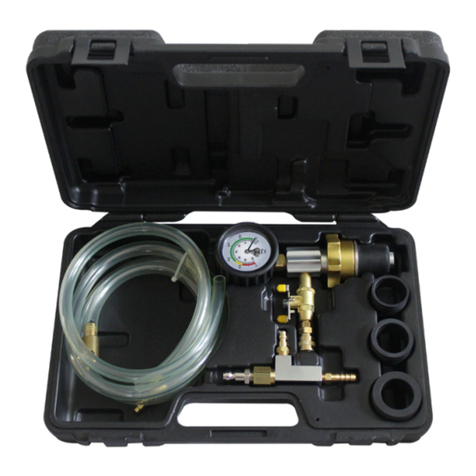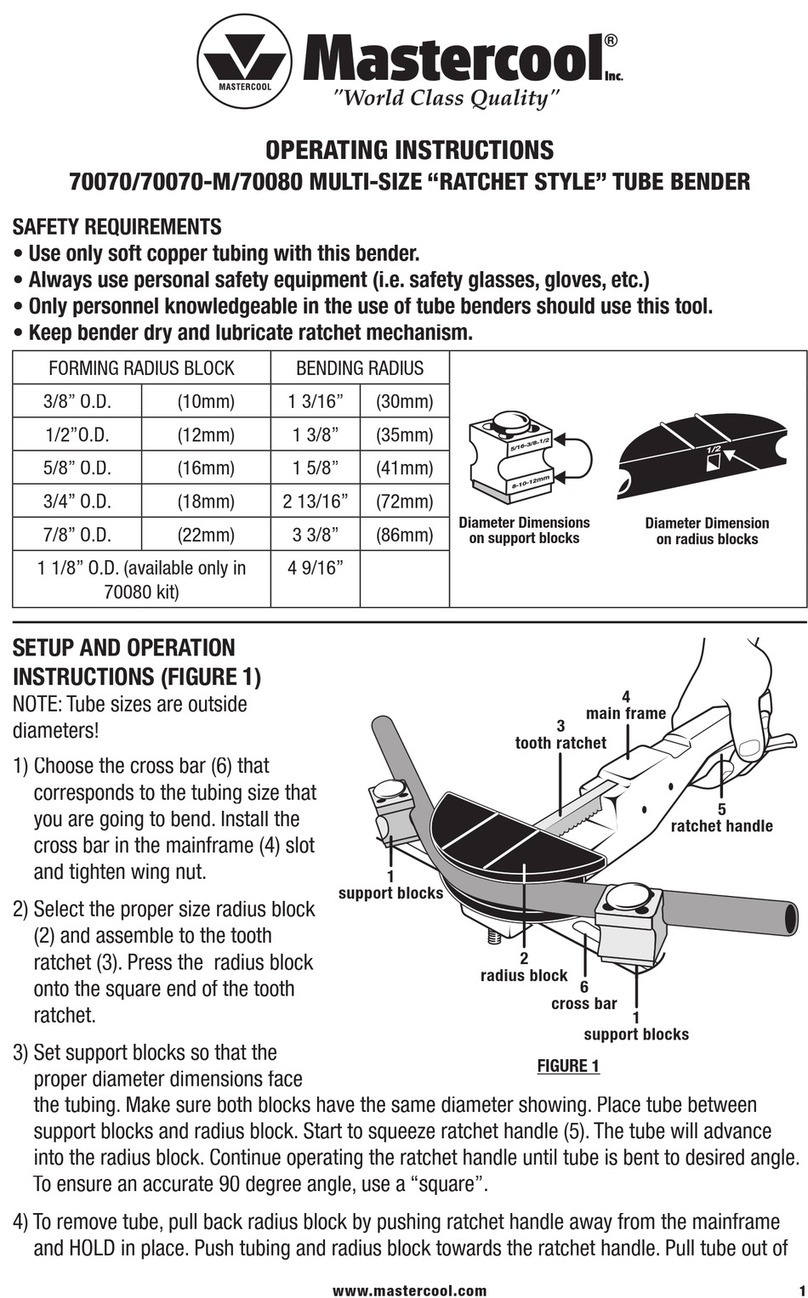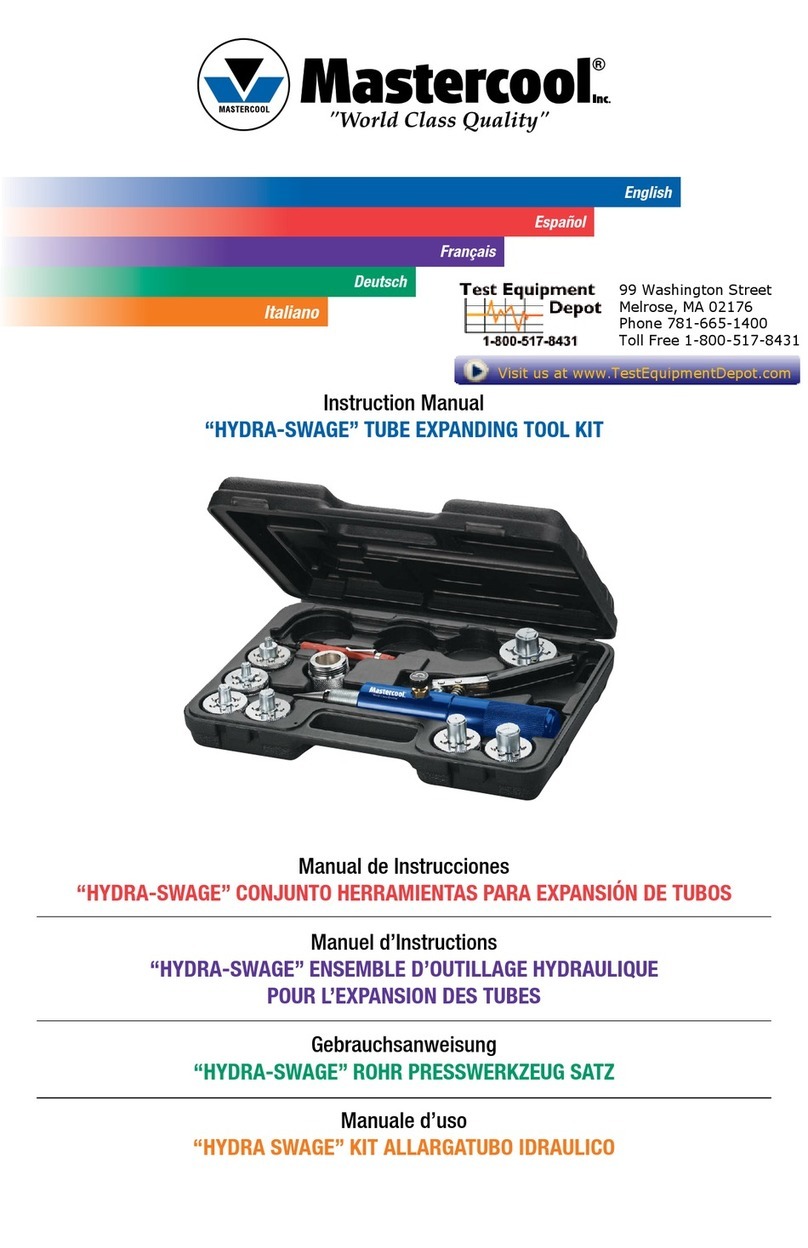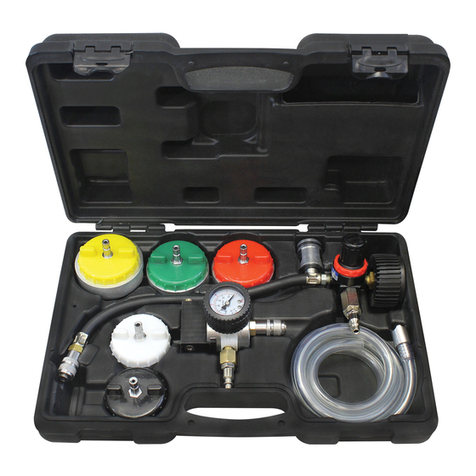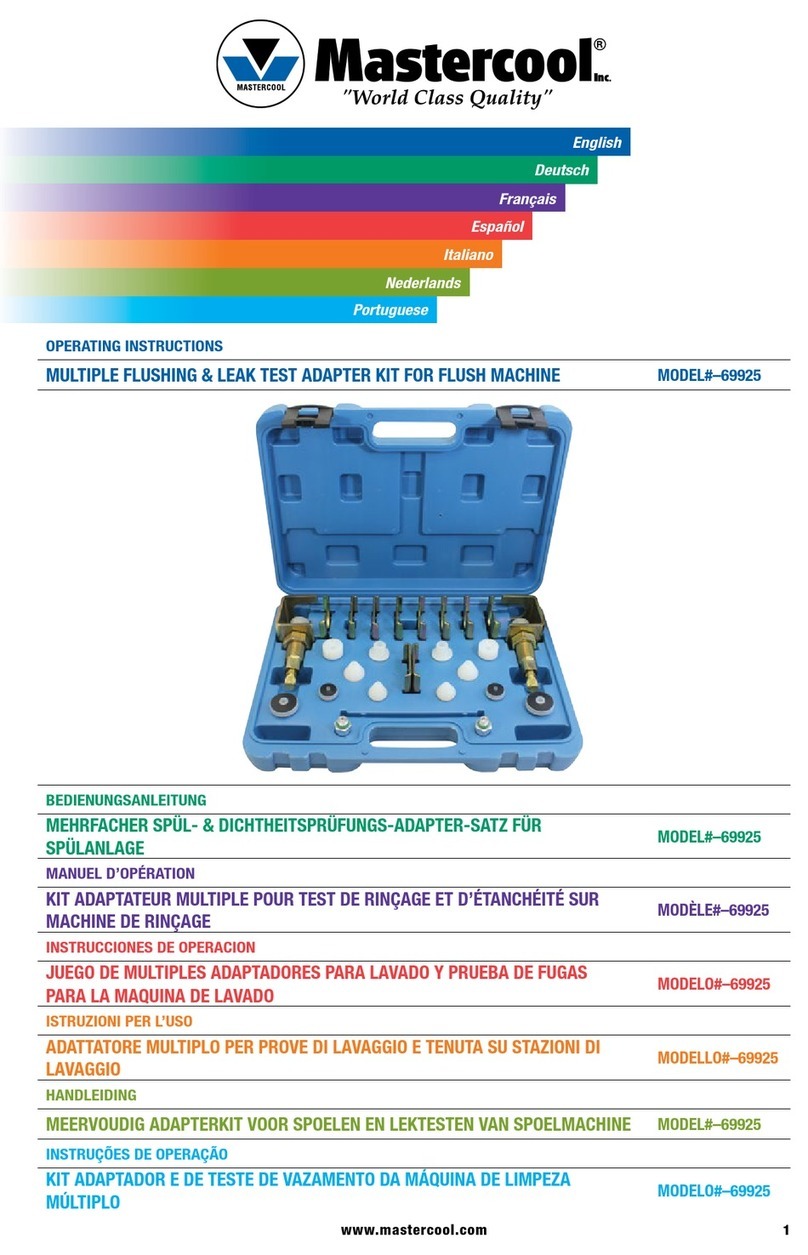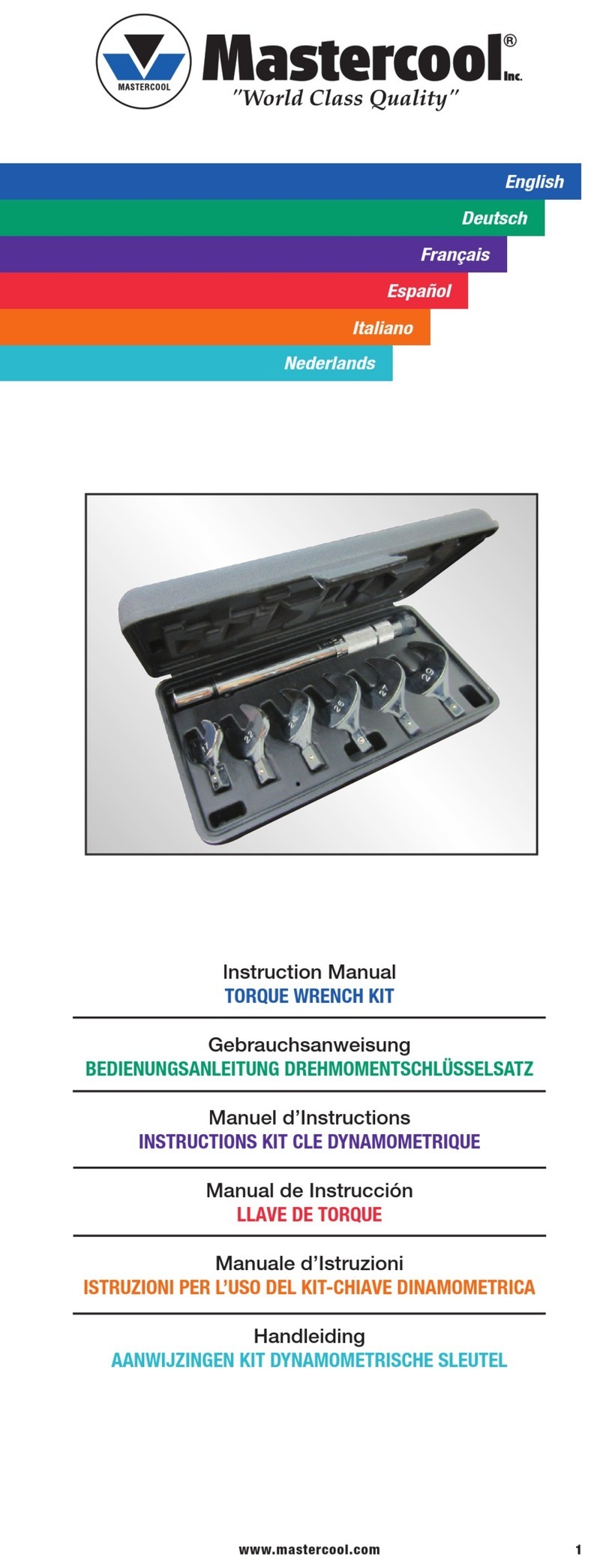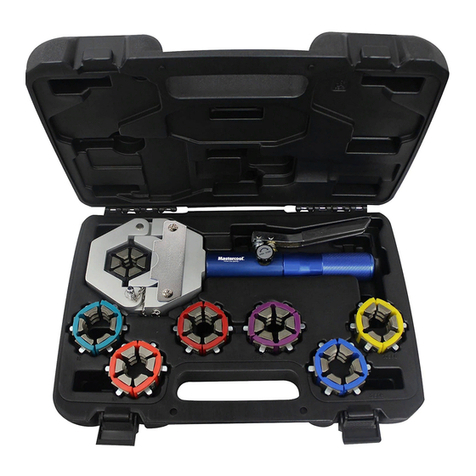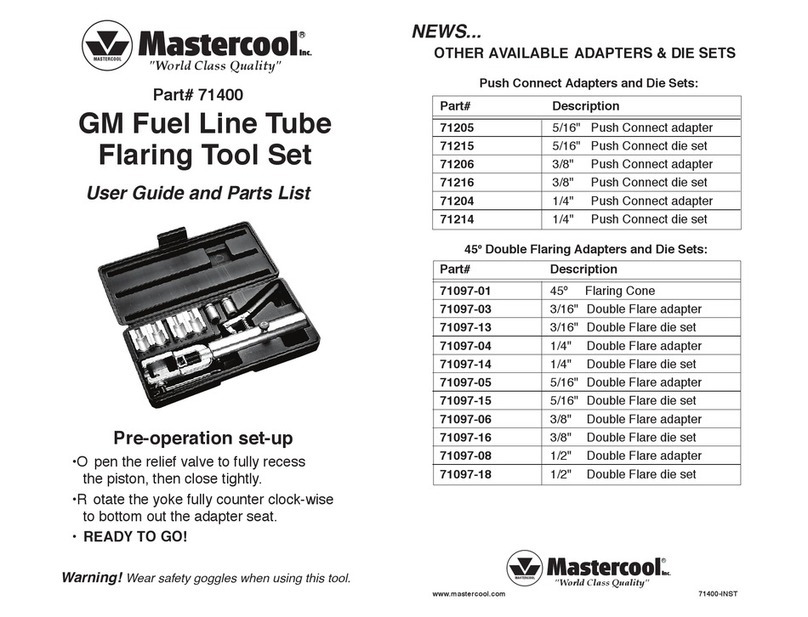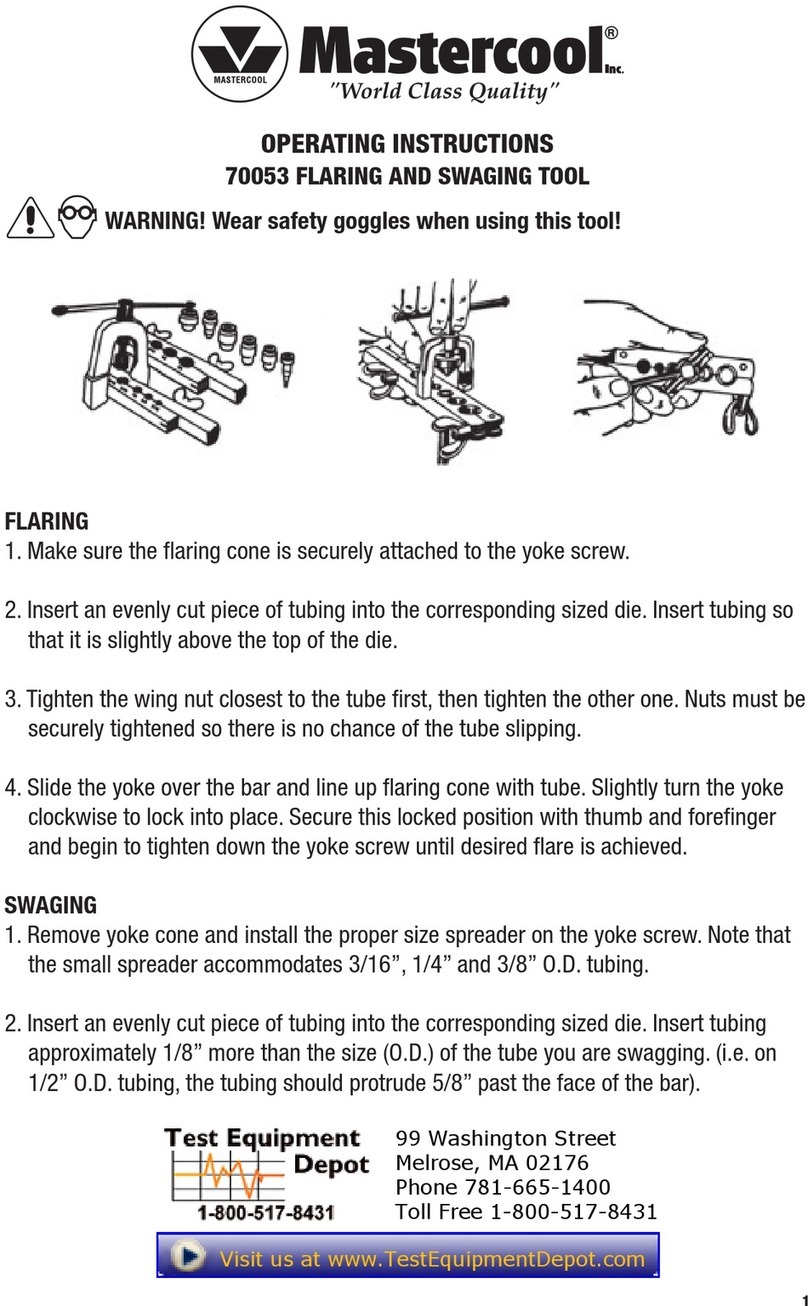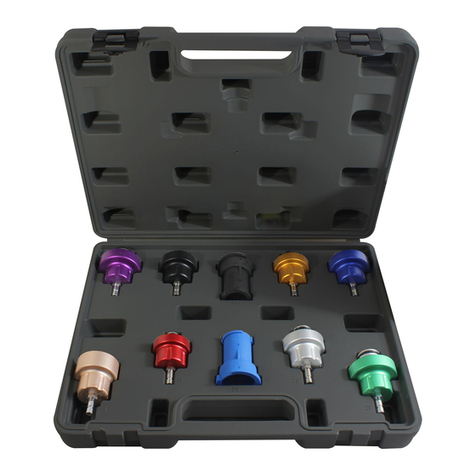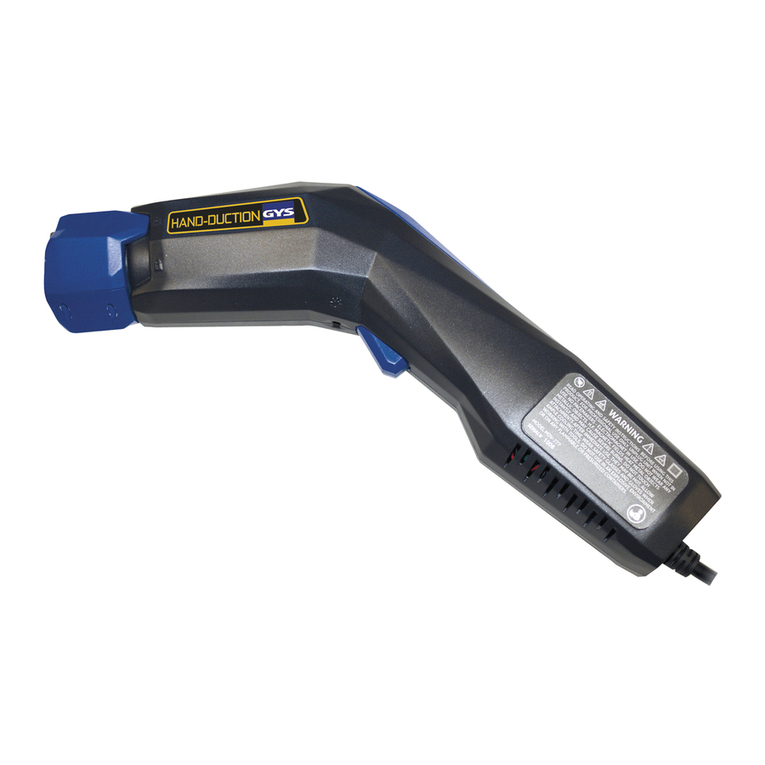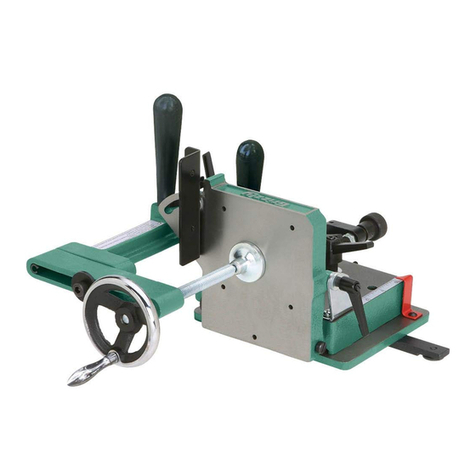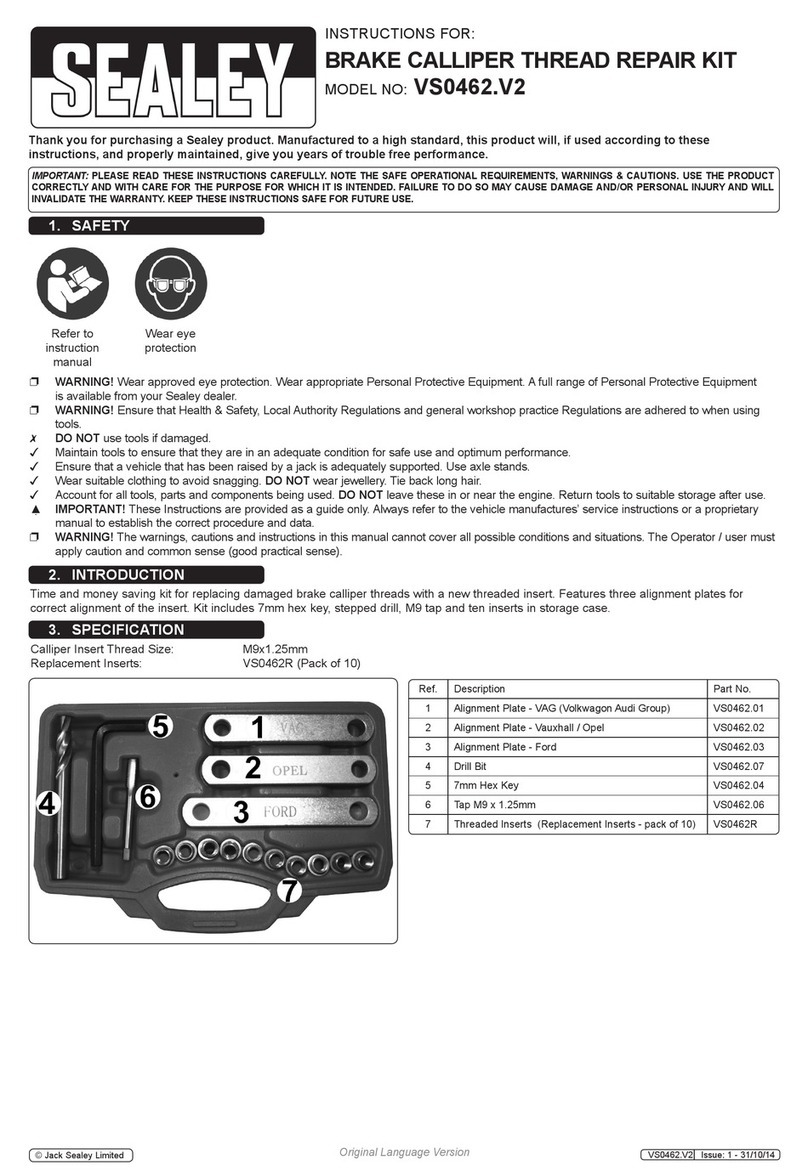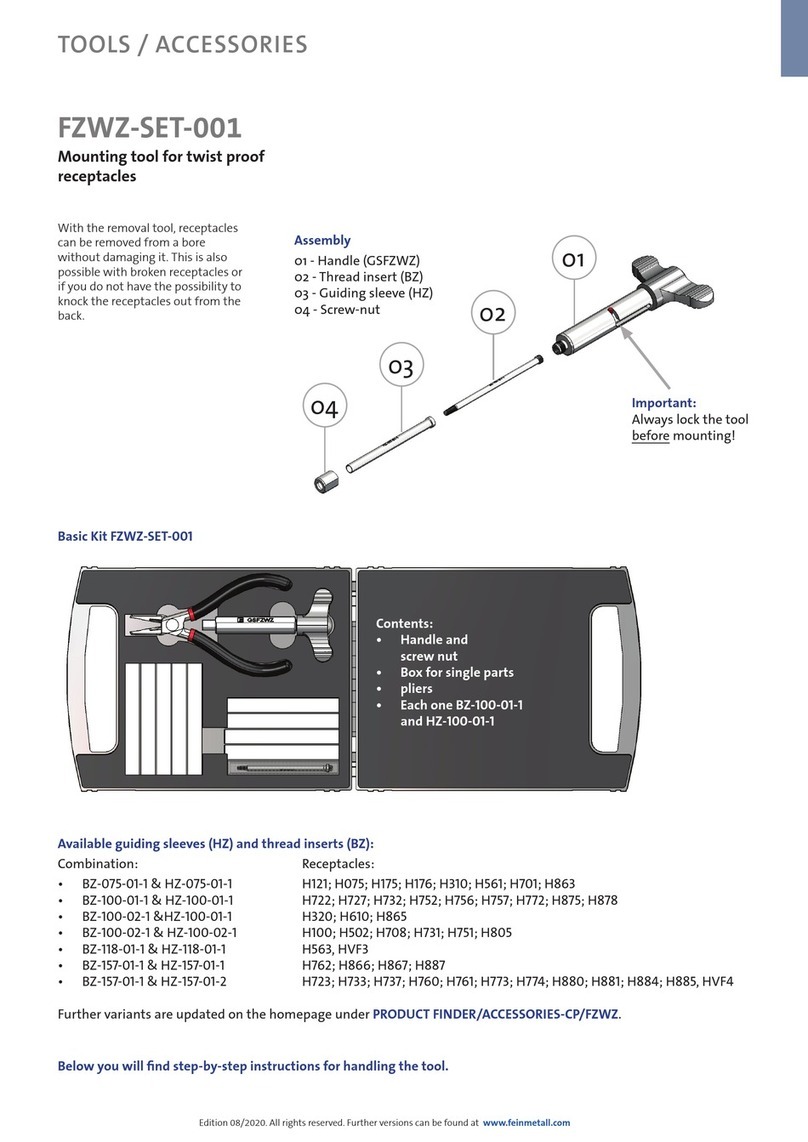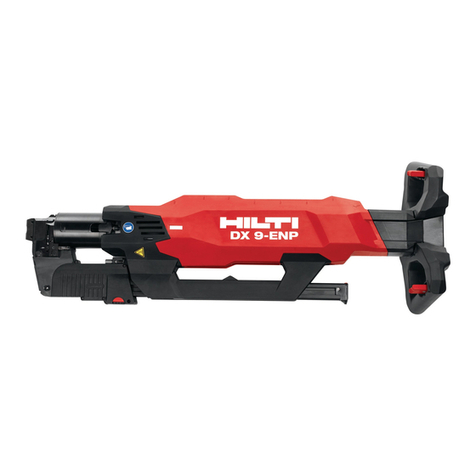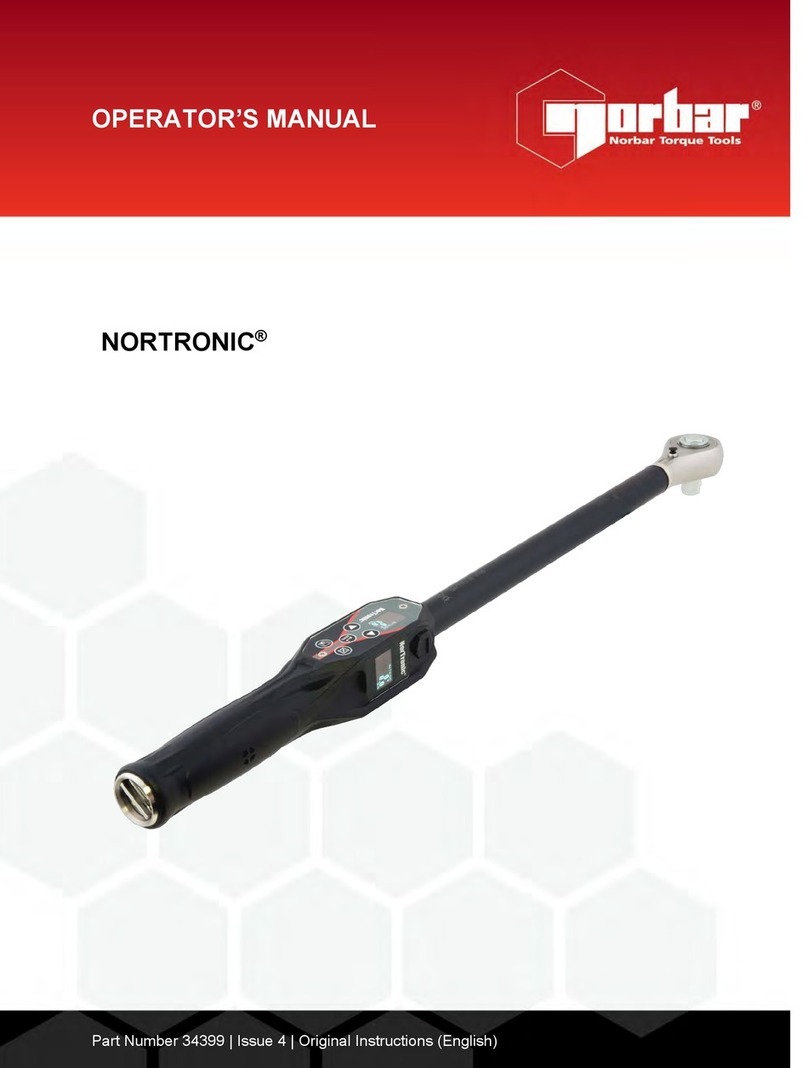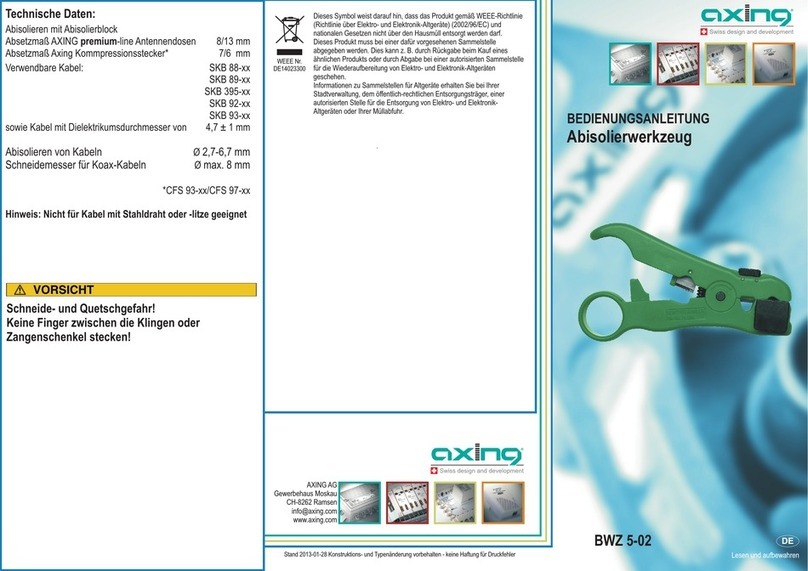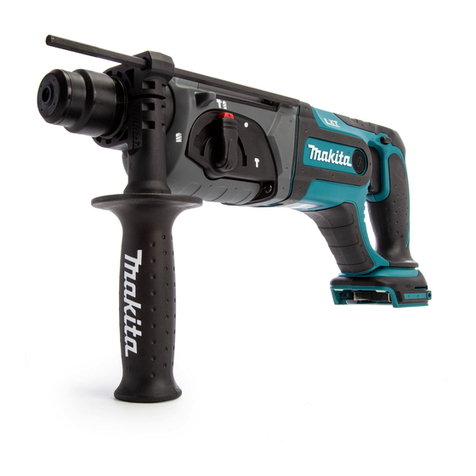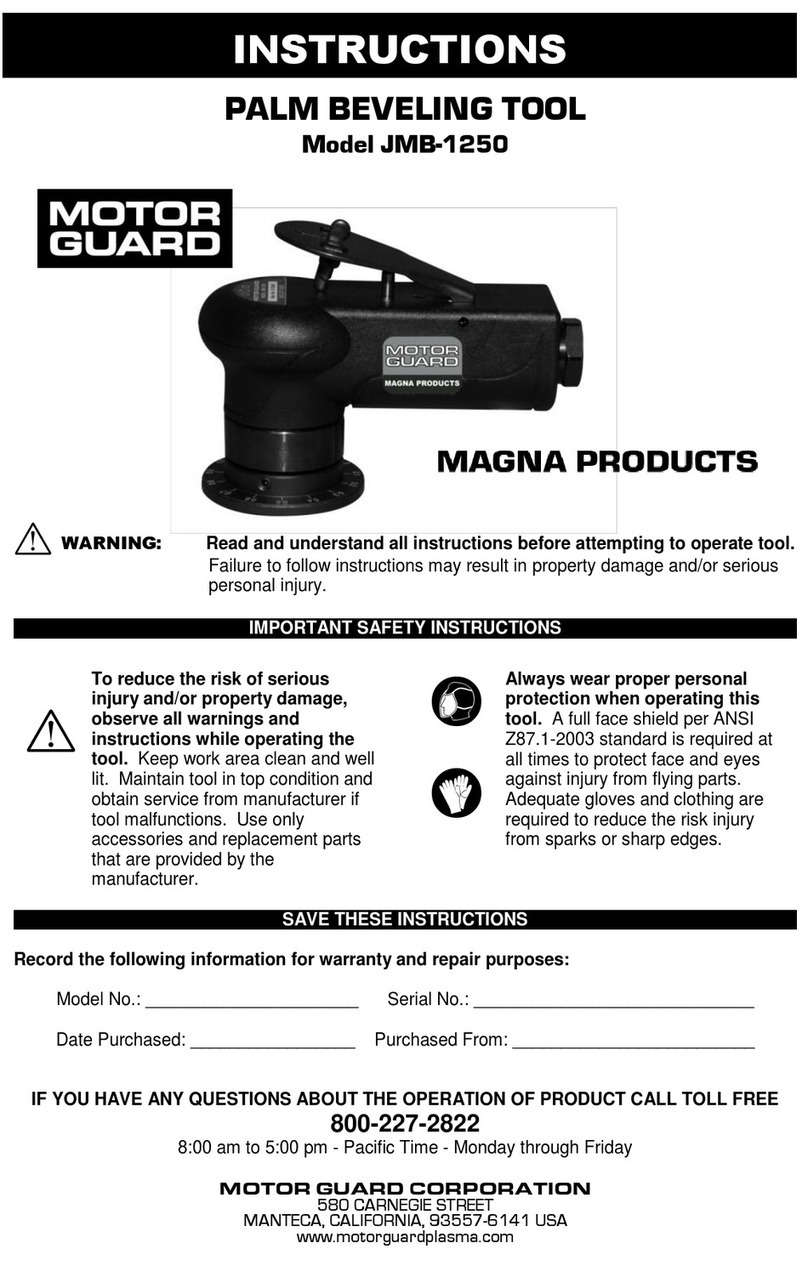8www.mastercool.com
Español
MOLDEADOR Y ABOCINADOR HIDRÀULICOS INSTRUCCIONES
Nota:
* El tubo de cobre que va a ser
abocinado ò moldeado debe
de estar bien cortado limpio y
encuadrado.
Utilize una herramienta
adecuada para
cortar tuberìa de
cobre, semejante
a un cortador de
tubo de calidad
comercial.
* Use periòdicamente el cepillo para limpiar las estrias en los dados. Esto ayudarà a prevenir que el tubo resbale.
* El extremo del tubo deve de estar completamente limpio en la parte interior y exterior.
1. Abra la vàlvula de alivio girandola en el sentido contrario de las manecillas del reloj. Sostenga el yugo y gire el cilindro
hidràulico hasta que la ùltima lìnea de la rosca del cilindro esté nivelada con la base del yugo. (Ref. Fig. 1)
2. Coloque el tamaño correcto del juego de dados y tubo en el yugo. El extremo del tubo deve de estar nivelado con la
cara del juego de dados para moldear, y nivelado con la marca en el juego de dados para abocinar. (Ref. Fig. 2)
3. Apretando la palanca “ T “ (girela en el sentido de las manecillas del reloj) bloqueara el juego de dados y el tubo en
el yugo. Cuando moldee, introduzca el tamaño correcto de adaptador para moldear en el sillin ò asiento en el extremo
del pistòn ( el extremo ranurado del adaptador encaja dentro del extremo ranurado del pistòn ). Cuando esté
abocinando introduzca el adaptador en forma de cono. (Ref. Fig. 3)
4. Cierre la vàlvula de alivio, girandola en el sentido de las manecillas del reloj. Cuando esté moldeando, sostenga el yugo
y gire el cilindro hidràulico en sentido de las manecillas del reloj , adelante el adaptador tan cerca a los dados como
sea posible sin insertarlo en el tubo. Cuando esté abocinando, gire el cilindro hidràulico en el sentido de las manecillas
del reloj , adelantando el adaptador para insertar el tubo. (Ref. Fig. 4)
5. Bombee el mango lentamente, a medida que el pistòn avance , asegurese de que el adaptador entra en el tubo
suavemente. Continue bombeando hasta que encuentre resistencia en el mango, y una larga pestaña en el adaptador
para moldear, alcance la cara de los dados , ò el cono adaptador, esté encajado en los dados. Pare de bombear, el
moldeado ò abocinado esta completo. (Ref. Fig. 5)
6. Abra la vàlvula de alivio, NO afloje la palanca “T”. Sostenga el yugo y gire el cilindro hidràulico en el sentido opuesto a
las manecillas del reloj , hasta que el adaptador esté completamente desenganchado de los dados. Afloje la palanca
“T “, gire en el sentido contrario a las manecillas del reloj y retire el juego de dados y el tubo del yugo. (Ref. Fig. 6)
Inserte el tubo en medio de los dados como muestra el gràfico.
Cuando moldee, la posiciòn del tubo
estarà a nivel con el extremo de los dados.
Inserte y apriete los dados y el tubo en el yugo.
Es importante sujetar seguramente los dados.
Sujete seguramente los dados, girando la palanca ‘ T ‘ en el
sentido de las manecillas del reloj.
Posiciòn
de Moldeado
Linea Guìa
